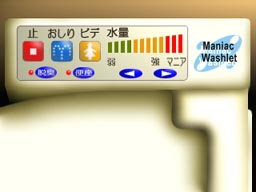永峰大輔さんの指揮による、音楽集団「三頭の象」の第1回定期演奏会を聴いた。演
奏曲目はディッタースドルフ、モーツァルト、ハイドンというウィーン古典派に位置付
けられる3人の作品から。
ハイドンやモーツァルトといった「メジャーどころ」はともかくとして、近年、研究
の深化(進化)だとか音楽家たちのレパートリーの拡大のおかげで、彼らと同時期に活
動した多くの作曲家たちの作品も以前よりは容易に耳に出来るようになった。とは言え、
それはあくまでも録音の上での話であって、実演 となるとそれはまだまだだと思う。
その意味で、今回の演奏会の冒頭に置かれたディッタースドルフは注目だった。今回
取り上げられたのは<オヴィディウスの転身物語による12 の シンフォニア集>の第
4番<ペルセウスに救われたアンドロメダ>である。これは標題交響曲と呼ばれる作品
ではあるのだけれど、例えば後にベルリオーズやリ スト等が手がけた標題音楽とはか
なり趣きが異なる。近現代のオーケストラが持つ楽器の多彩な音色や、調性やリズムの
脱規則化あるいは解放という表現手段を作曲家がまだ手にする以前のことなのだ。では
ディッタースドルフの音楽にドラマが不足しているのか、というと、そんなことはない。
嘆きや恐怖あるいは平和な雰囲気等が4つの楽章の中にしっかりと息づいている。ただ、
それらの表現をきっちりと音にするのは、古典派の音楽語法についての理解や共感が無
いと難しい。
今回のディッタースドルフの冒頭では、音楽の流れに不明瞭さが感じられたが、それ
はその語法についての戸惑いが楽団側にまだ残っていたからではないだろうか。だが、
ある程度音楽が進んでいくとその不明瞭さはかなり薄れていった。それは永峰さんがこ
の曲に含まれるドラマの変化を適切に捉えていたためだろうし、またその変化を大仰な
演出で聴き手に示すということをしなかったおかげでもあると思う。
2曲目はモーツァルトのフルート協奏曲第2番で、もとがオーボエ協奏曲の方。独奏
はジェームス・シュトラウスさんだった。シュトラウスさんの演奏ぶりを観ていると、
いかにも演奏することが楽しい、という気分はよく伝わってきた。その間合いの取り方
(あるいは3曲!のアンコール)などからしても、遊び心を持っているということは理
解出来るのだけれど、問題はその遊び心とモーツァルトの軽やかさとが果たして一致し
ていたか、である(ついでに言えば、アンコールで演奏されたドビュッシーにも、この
作曲家特有の「色」や「色気」が不足していたように思える)。あまりに四角四面に演
奏されるのもどうかとは思うが、この曲の軽やかさが本来求める音楽の純度はもっと高
いはずだ。その点においては、むしろ永峰さんとオケが素晴らしく快調な音楽の流れや
響きを作り出すことで、曲全体としてはある程度救われたように思える。
さて、プログラムの最後に置かれたのはハイドンの交響曲第99 番である。実は、僕
は永峰さんのハイドン演奏を非常に楽しみにしていた。と言うのは、僕は今回の演奏会
の一週間前に、別の楽団で彼の指揮でベートーヴェンの交響曲第1番を聴いたのだが、
その際に、特に第4楽章を聴きながらそこにハイドンの影を強く感じたからだ。それは
後ろ向きな「必須の通過点としてのハイドン」ではなくて、肯定的に「受け継がれたハ
イドン」だった。ハイドンの交響曲 を聴く時の醍醐味は、まずは<驚愕>や<時計>
等で示されるユーモアなのかもしれないけれど、僕はスリル溢れる対位法や予想外な方
向に進む転調や音楽の流れ、あるいはドラマの頂点としてのパウゼの扱い等の方に強い
興味を抱いている。これらをベートーヴェンはまるまる受け継いだとまでは言わないが、
深化と昇華を果たした成果が彼の交響曲第1番だと言えるのではないか。永峰さんの演
奏はそのことを反映したもののように思えた。であるならば、そこから類推される 永
峰さんのハイドン解釈も面白いに違いない、ということなのだ。
ただ、ハイドンの難しさは、ハイドンが曲の中に仕掛けたさまざまな試みについて、
それに気が付いたからと言って無闇にこれみよがし的な表現をすると流れを損なうこ
とにある。もちろん、仕掛けに気が付かないのは論外だ。分かった上でどこまでやるの
か、このバランス感覚が重要なのである。
今回の第99 番の演奏について言えば、永峰さんのバランスは良かったと思う。全曲
を通してディナミークやテンポの変化に対するメリハリの付け方は過不足無く素晴ら
しかったし、また第4楽章の中盤における対位法による進行はとてもスリルがあった。
モダン楽器によるハイドン演奏が生き残るとすれば、こういうスタイルを徹底すること
なのではないだろうか。僕は永峰さんのハイドンをもっと聴いてみたい。
最後に楽団について。弦楽器を中心に全体的に好演していたとは思うが、より合奏の
精度を高めて欲しい。そうすれば選曲と活動の幅も大いに広がるはずだし、それにより
音楽監督である永峰さんの美点が更に顕われやすくなると思う。(若林真樹)




